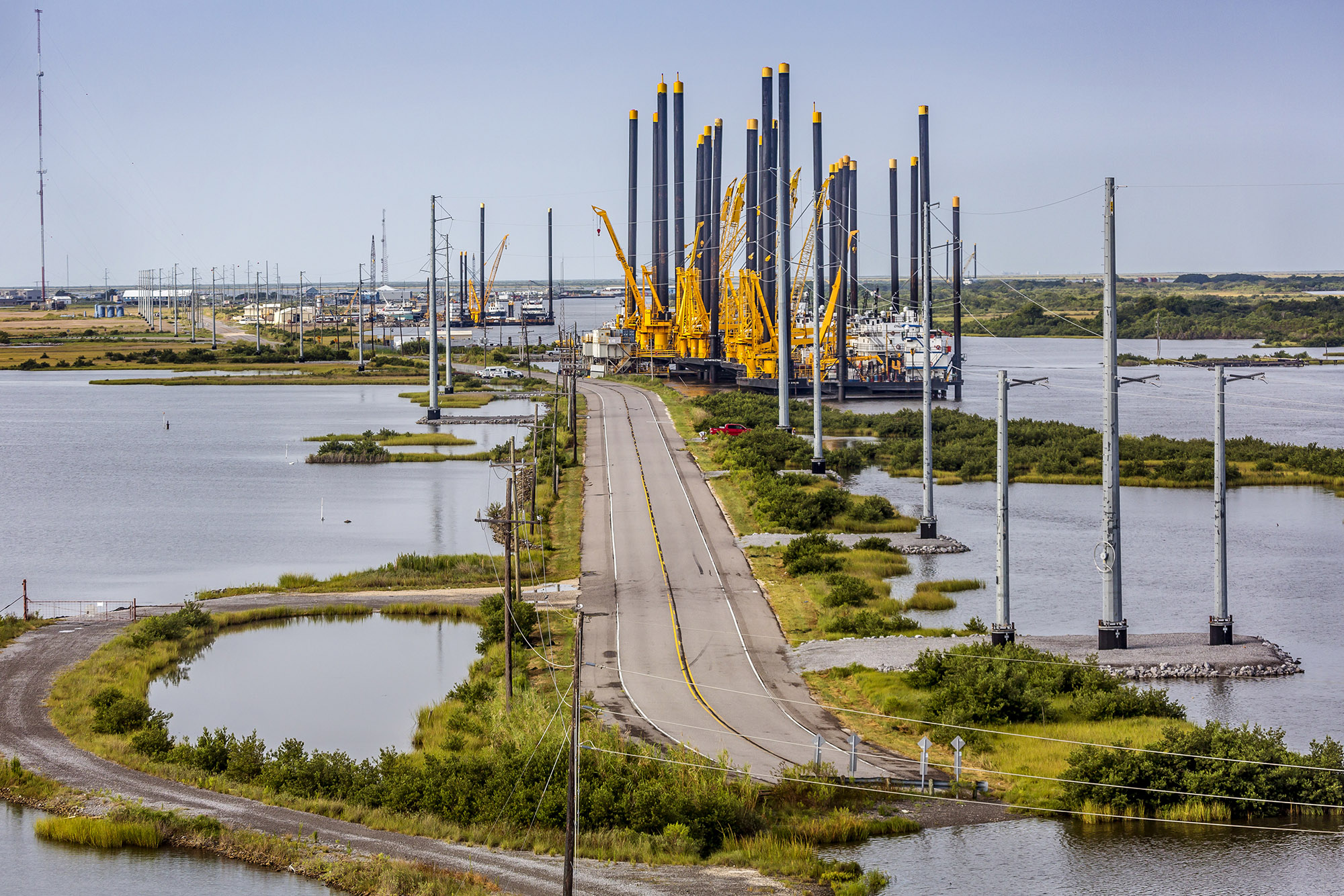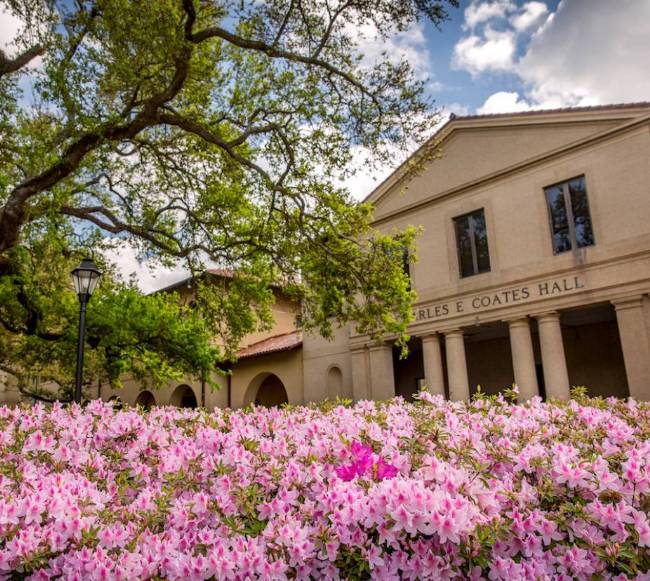‘Win-Win’ for Students, LSU and the Future of Louisiana’s Coast and Energy Industry
July 29, 2025
Attracting the nation’s top research students to lead in energy and environmental science.

Port Fourchon, Louisiana, is a major coastal hub for offshore energy, fishing, and transportation located at the mouth of Bayou Lafourche.
A collaborative team of researchers in the Cain Department of Chemical Engineering and the Department of Oceanography and Coastal Sciences at LSU has won a first-of-its-kind grant from the National Science Foundation (NSF) to bring 10 of the country’s most brilliant research students to LSU to pursue a Ph.D. and emerge as leaders in energy and environmental science.
“Achieving energy security and sustainable development is one of the grand challenges of the 21st century,” said Kevin McPeak, associate professor of chemical engineering at LSU and team leader for the effort. “Louisiana highlights this complicated relationship and I’m excited to see how this program can attract the best and the brightest to help solve it.”
The project, Widening the Nation’s STEM Workforce in Louisiana (WIN-WIN), has been awarded $1.6 million through the NSF’s new EPSCoR Graduate Fellows Program (EGFP). This brand-new program extends the impact of the agency’s highly competitive Graduate Research Fellows Program (GRFP). It provides states and territories that historically have received a smaller share of federal research funding, such as Louisiana, with an opportunity to attract and retain top talent. Students who apply to the GRFP program and receive an honorable mention immediately become eligible for the EGFP program.
“This is a great opportunity for LSU to recruit the most high-achieving students to address some of the most pressing problems for the state,” said Matthew Hiatt, a coastal hydrologist and associate professor of oceanography and coastal sciences at LSU. “We’re going to get the cream of the crop working on these topics, and that’s a huge deal for Louisiana because these students are on the same playing field as the GRFP fellows.”
Hiatt would know. He’s a former NSF Graduate Research Fellow.
“It’s well known that Graduate Research Fellows disproportionately attend highly prestigious universities like Harvard or MIT,” Hiatt said. “Now, high-potential students will have a chance to come to LSU on this fellowship and get three years of funding, and top students from Louisiana who want to stay in Louisiana have a very compelling reason to apply.”
“All of a sudden, LSU becomes a vastly better option for extremely qualified students who otherwise may not have come to Louisiana or had the chance to stay,” said Paul Miller, a coastal meteorologist and associate professor of oceanography and coastal sciences at LSU.
“All of a sudden, LSU becomes a vastly better option for extremely qualified students who otherwise may not have come to Louisiana or had the chance to stay.”
Paul Miller, coastal meteorologist and associate professor of oceanography and coastal sciences at LSU
The faculty team behind the project are now actively recruiting students interested in becoming academic, industry, and government leaders who understand how Louisiana’s most important industry—energy—depends on and impacts its most valuable natural resource—the coastal environment. While half of the students will be focused on chemical engineering and the other half on coastal science, all students will participate in convergence workshops with external partners, including energy companies and state agencies, to understand and solve today’s and future challenges for Louisiana’s working coast, home to 300 chemical manufacturing facilities, 150 petrochemical plants, and 15 refineries on exceptional land that is changing and simultaneously sinking and eroding.
Coast and energy are two of the five cornerstones of LSU’s Scholarship First Agenda for Louisiana. This project supports both. The coastal science students will generally target problems related to hydrology, meteorology, wetlands, and soils. The chemical engineering students, meanwhile, will pursue research projects in the broad physical sciences—spanning chemistry, physics, and engineering—to help Louisiana and the world overcome challenges in energy and the environment.
All students will gain access to exceptional research facilities and instruments, including one of only two university-operated synchrotrons in the nation, a high-frequency electron paramagnetic resonance spectrometer, a scanning near-field optical microscope, a nuclear magnetic resonance spectrometer, and a brand-new high-resolution scanning transmission electron microscope.
“This is a win for students, for LSU, and for Louisiana,” Miller said. “We just didn’t want to call the project WIN-WIN-WIN because that would be cheeky.”
Next Step
LSU's Scholarship First Agenda is helping achieve health, prosperity, and security for Louisiana and the world.


